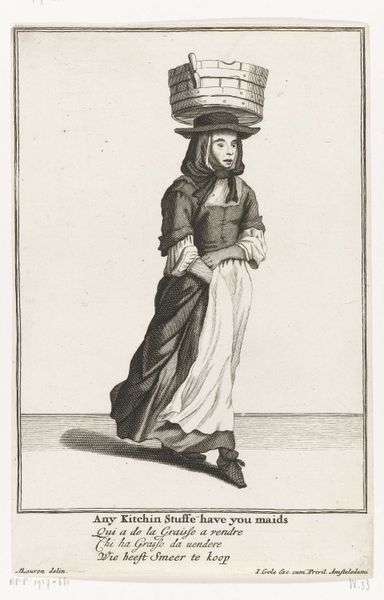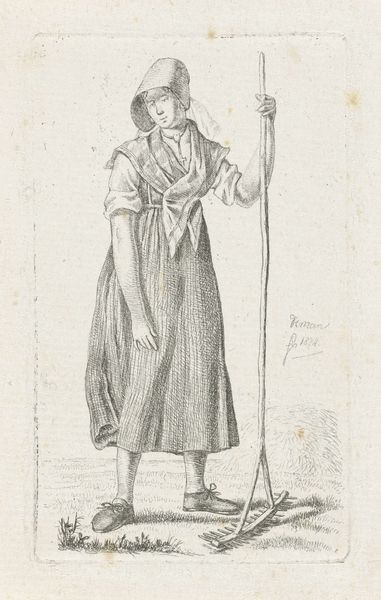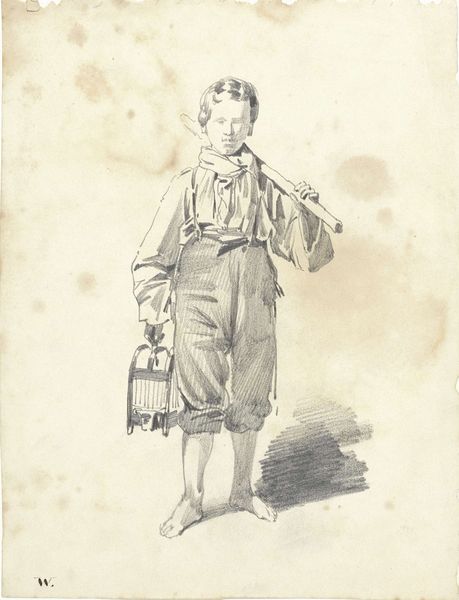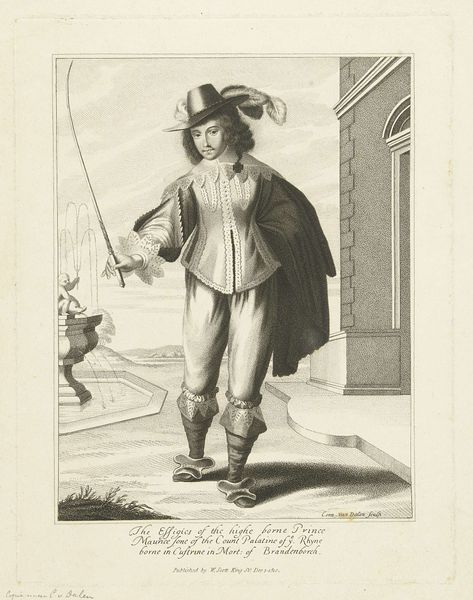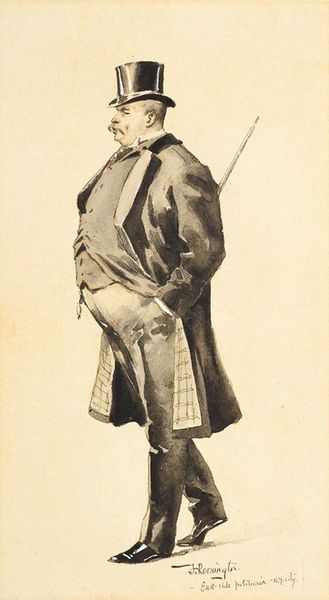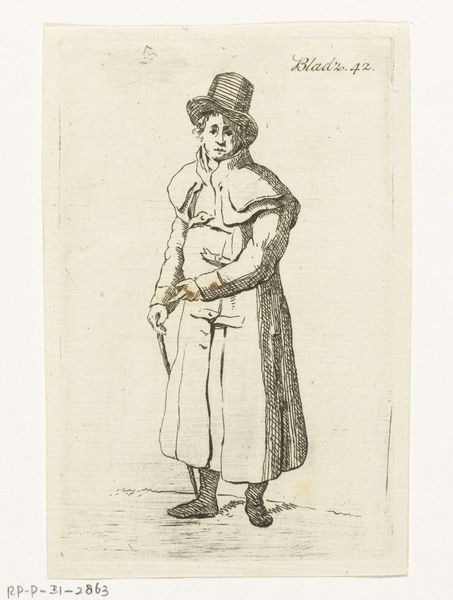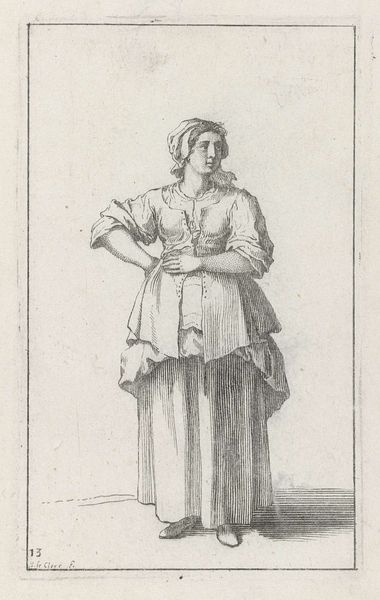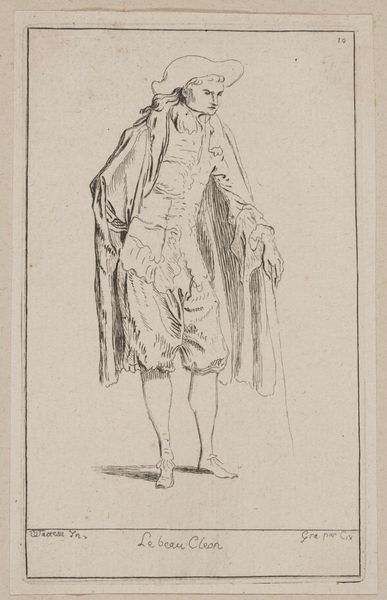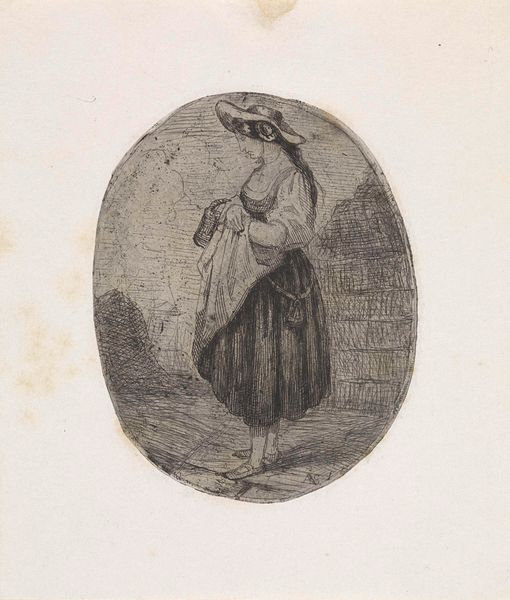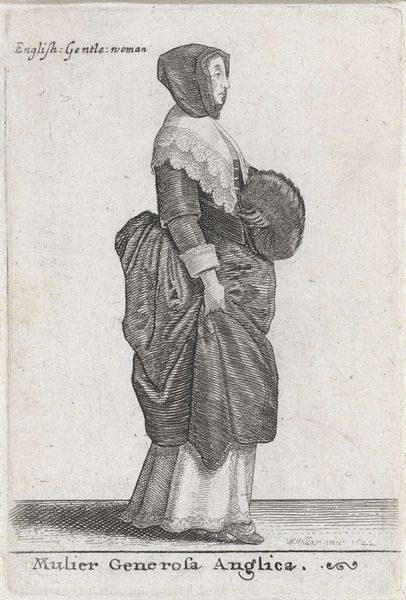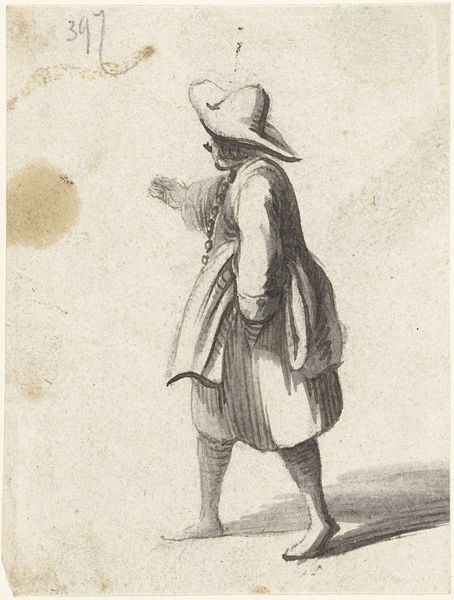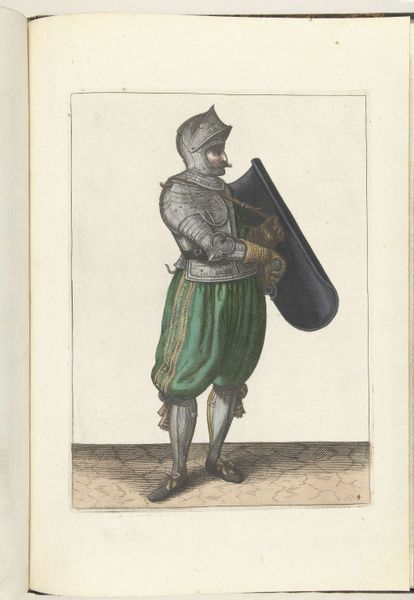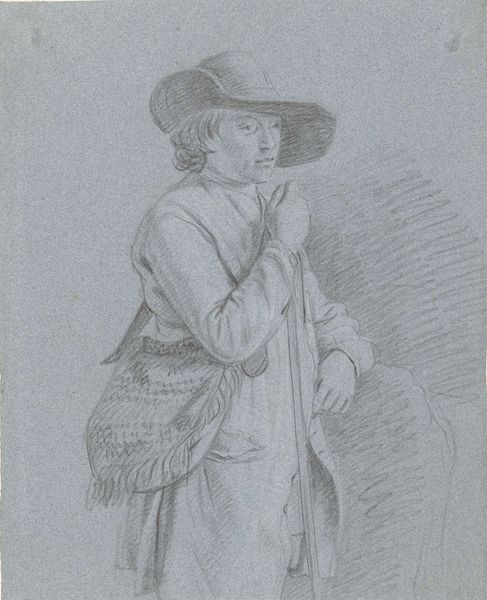
Copyright: Public domain
Editor: This is Émile Bayard's "The Count of Almaviva, from 'The Barber of Seville'," created in 1876. It’s a character study done in ink and graphite. The figure seems both confident and wistful at the same time. I’m particularly struck by how theatrical he seems. What cultural touchstones do you see in this image? Curator: Indeed. The theatricality speaks volumes. Consider the mandolin – more than just a musical instrument, it's a symbol of serenades, of romantic pursuit, of conveying emotions veiled in music. Think about its use within the Commedia dell'arte tradition. Does it remind you of any character types? Editor: Perhaps Harlequin, with the performative, almost playful, melancholy? Curator: Precisely! The costume—the wide-brimmed hat, the ruffled shirt, the cape—all point to established visual codes. Consider the psychology of disguise inherent in theater. Almaviva himself employs disguises within the play. Bayard captures the essence of a character *defined* by performance. Do you notice any other visual clues that communicate status or perhaps deception? Editor: The high boots seem to imply some kind of nobility, but also freedom of movement... almost like he's ready to make a quick escape. It definitely complicates the romantic image I initially had. Curator: A keen observation! And it reflects the play’s deeper themes – not just of love, but social maneuvering, class, and the inherent theatricality of everyday life. We bring our own meanings to these images that shift over time, linking personal and cultural memories. Editor: This has made me appreciate how an image can carry so much history within its seemingly simple form. Curator: Exactly, each detail carries a weighted significance which creates and recreates narratives. It reveals a complex tapestry of emotions, identities, and historical narratives.
Comments
No comments
Be the first to comment and join the conversation on the ultimate creative platform.
